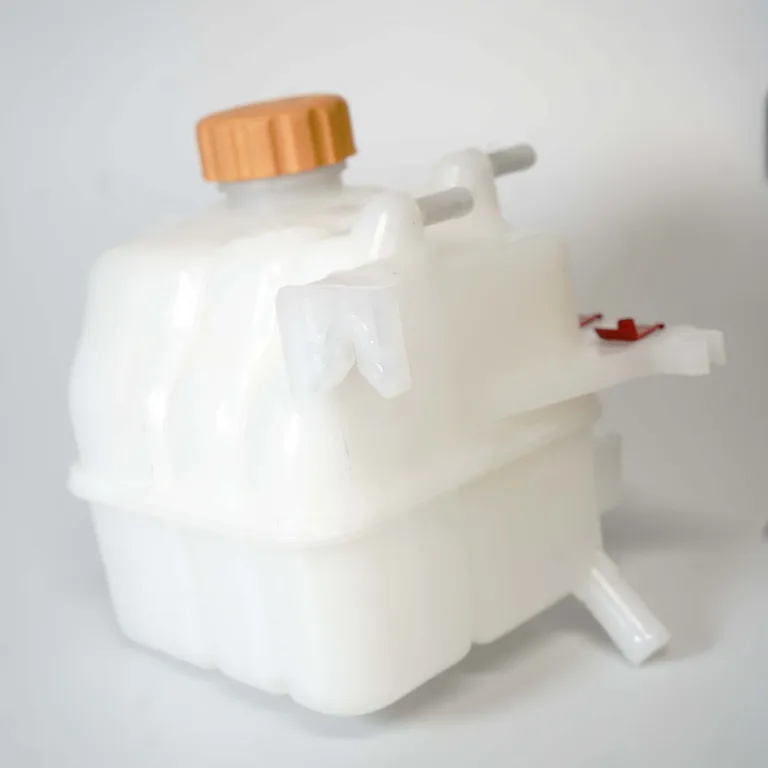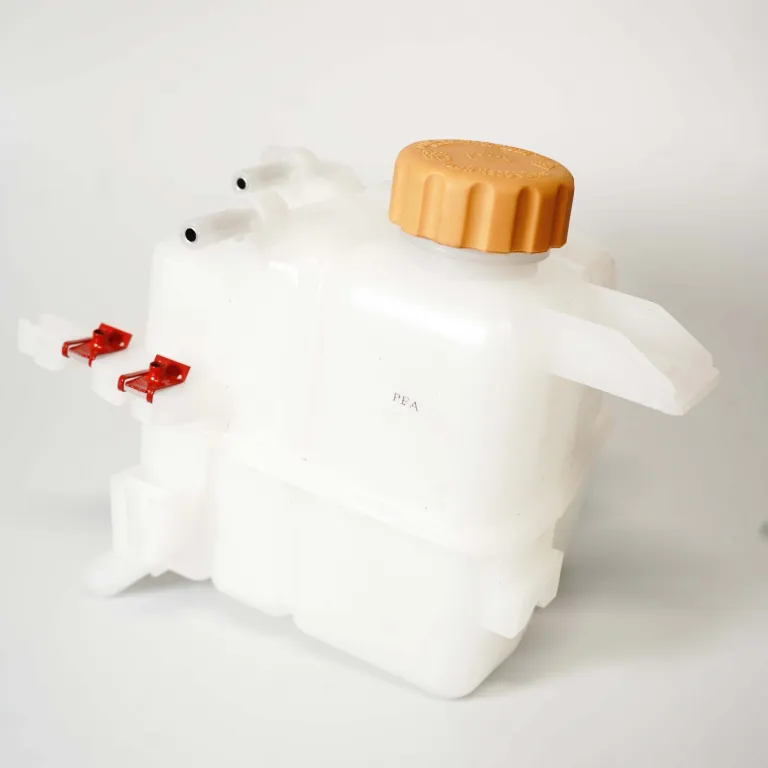When it comes to taking care of your vehicle, there are many important components that need to be maintained. One such component that often gets overlooked is the coolant reservoir. That small but mighty part plays a crucial role in keeping your vehicle’s engine running smoothly and preventing overheating. In that blog post, they will delve into all you need to know about coolant reservoirs, why they are essential for your vehicle’s health and performance, and how to properly maintain them.
Understanding The Basics
A coolant reservoir, also known as an overflow tank or expansion tank, is a vital component of your vehicle’s cooling system. It is a small plastic container typically located near the radiator and connected to it via a hose. Its primary function is to store excess coolant and maintain the proper level in the cooling system.
When your vehicle’s engine heats up, the coolant expands and needs a place to go. That’s where the coolant reservoir comes into play. It provides a safe space for the coolant to expand into, preventing pressure buildup and potential damage to the cooling system.
Maintaining The Health & Performance
Having a properly functioning coolant reservoir is crucial for maintaining the health and performance of your vehicle. Without it, the cooling system may become pressurized, leading to leaks, overheating, and potential engine damage. A faulty coolant reservoir can also cause coolant loss, which can result in engine overheating and a decrease in overall performance.
In addition to storing excess coolant, the coolant reservoir also serves as a visual indicator of the coolant level. By checking the reservoir regularly, you can monitor the coolant level and detect any leaks or issues with the cooling system.
The Key Role Of The Coolant Reservoir
The coolant reservoir may be a small part of your vehicle, but its role in the performance of your car cannot be overstated. That unassuming component plays a key role in maintaining the health and efficiency of your vehicle’s engine.
One of the main functions of the coolant reservoir is to prevent overheating. As the engine heats up, the coolant expands, and without a place to go, the pressure in the cooling system can increase. That can lead to leaks, overheating, and potentially even engine damage.
In addition to preventing overheating, the coolant reservoir also serves as a visual indicator of the coolant level. By regularly checking the reservoir, you can monitor the coolant level and identify any leaks or issues with the cooling system.
Signs Your Coolant Reservoir May Need Attention Or Replacement
One of the key aspects of maintaining your vehicle’s health is being aware of any signs that your coolant reservoir may need attention or replacement. While the coolant reservoir is a small component, it plays a crucial role in the overall performance of your vehicle’s cooling system. Here are some signs to watch out for that may indicate an issue with your coolant reservoir:
Coolant Leaks
If you notice puddles of coolant underneath your vehicle or signs of a coolant leak, it may be a sign that your coolant reservoir has a crack or a faulty seal. Coolant leaks can lead to a loss of coolant, which can cause your engine to overheat.
Low Coolant Level
If you frequently find yourself having to add coolant to your vehicle’s system, it could be a sign that there is a leak in the coolant reservoir or elsewhere in the cooling system. A constantly low coolant level is a clear indicator that your reservoir may need attention or replacement.
Overheating Engine
If your vehicle’s engine is frequently overheating, it could be due to a malfunctioning coolant reservoir. A faulty reservoir may not be able to properly store and release coolant, leading to insufficient cooling and overheating of the engine.
Cracked or Damaged Reservoir
Inspect your coolant reservoir regularly for any cracks, damage, or signs of wear. A cracked or damaged reservoir can lead to coolant leaks and compromise the performance of your cooling system.
How To Maintain Your Coolant Reservoir For Optimal Health?
Proper maintenance of your coolant reservoir is essential for ensuring optimal health and performance of your vehicle. Here are some tips on how to maintain your coolant reservoir:
- Regular Inspections: Take the time to visually inspect your coolant reservoir for any signs of damage, cracks, or leaks. If you notice any issues, it’s important to address them promptly.
- Check Coolant Level: Periodically check the coolant level in the reservoir. Make sure it is within the recommended range. If the level is consistently low, it may indicate a leak in the reservoir or elsewhere in the cooling system.
- Flush and Replace Coolant: Over time, coolant can become contaminated with debris and lose its effectiveness. Follow the manufacturer’s recommendations for flushing and replacing the coolant in your vehicle. That will help maintain proper coolant quality and prevent overheating.
- Inspect Hoses and Connections: Examine the hoses and connections that are connected to the coolant reservoir. Look for any signs of wear or deterioration. Replace any damaged or worn-out hoses or connections to prevent leaks.
- Follow the Maintenance Schedule: Refer to your vehicle’s owner’s manual for the recommended maintenance schedule. Stick to the suggested intervals for coolant system inspections, flushes, and replacements.
How To Choose The Right Coolant Reservoir For Your Vehicle
Choosing the right coolant reservoir for your vehicle is essential to maintaining its health and performance. With so many options available on the market, it can be overwhelming to make the right choice. However, by considering a few key factors, you can ensure that you select the perfect coolant reservoir for your vehicle.
First and foremost, you need to ensure that the coolant reservoir you choose is compatible with your vehicle’s make and model. Different vehicles may have specific requirements, so it’s crucial to check the manufacturer’s recommendations or consult with a professional mechanic.
Another important consideration is the material of the coolant reservoir. It is recommended to choose a reservoir made from durable and heat-resistant materials, such as high-quality plastic or aluminum. These materials can withstand the high temperatures and pressure associated with the cooling system.
Consider The Warranty
It is beneficial to choose a coolant reservoir that has a transparent or translucent design. That allows for easy monitoring of the coolant level, making it easier to detect any potential issues or leaks.
Lastly, don’t forget to consider the warranty offered by the manufacturer. A reputable brand will provide a warranty that guarantees the quality and performance of its coolant reservoir. That gives you peace of mind, knowing that you are investing in a reliable and long-lasting product.
By taking these factors into account, you can choose the right coolant reservoir for your vehicle, ensuring optimal performance and longevity. Remember, selecting the right component is just as important as proper maintenance for the overall health of your vehicle.
Benefits Of Ford Falcon Power Steering Pumps
When it comes to maintaining and upgrading your vehicle, the benefits of investing in a quality power steering pump cannot be overlooked. If you own a Ford Falcon, opting for a Ford Falcon power steering pump can bring numerous advantages.
First and foremost, a Ford Falcon power steering pump is specifically designed for your vehicle, ensuring a perfect fit and compatibility. That means you can have peace of mind knowing that the pump will perform optimally and integrate seamlessly with your vehicle’s steering system.
Maneuverability
Another advantage is enhanced maneuverability. The precise and responsive steering offered by a Ford Falcon power steering pump allows you to navigate corners and curves with ease, providing a more confident and enjoyable driving experience.
In addition to improved control and maneuverability, a quality power steering pump can also help extend the life of your vehicle’s steering system. By reducing the strain on the components, the pump helps prevent premature wear and tear, potentially saving you from costly repairs down the line.
The Benefits Of Upgrading Your Coolant Reservoir
Upgrading your coolant reservoir can bring a host of benefits to your vehicle’s health and performance. By investing in a high-quality reservoir, you can experience improved cooling system efficiency and overall engine longevity.
One of the primary benefits of upgrading is increased durability. High-quality coolant reservoirs are often made from durable materials like aluminum or high-quality plastic, ensuring they can withstand the high temperatures and pressure of the cooling system. That means less chance of cracks or leaks, resulting in a more reliable and efficient cooling system.
Provide Better Coolant Storage Capacity
Furthermore, upgrading your coolant reservoir can provide better coolant storage capacity. Some upgraded reservoirs have larger capacities, allowing for greater coolant expansion and minimizing the risk of pressure buildup. That can significantly reduce the chances of coolant loss and overheating.
Overall, investing in an upgraded coolant reservoir is a smart choice for maintaining the health and performance of your vehicle. It ensures better durability, enhanced features, and improved coolant storage capacity, resulting in a more efficient and reliable cooling system.
Improving Engine Longevity With A Quality Coolant Reservoir
Your vehicle’s engine is the heart of your car, and maintaining its longevity is crucial. One often overlooked but essential component in achieving that goal is a quality coolant reservoir. By upgrading to a high-quality coolant reservoir, you can significantly improve the lifespan of your engine.
A quality coolant reservoir ensures optimal cooling system performance, preventing overheating and potential engine damage. It is made from durable materials, such as aluminum or high-quality plastic, that can withstand the high temperatures and pressure associated with the cooling system.
FAQs
1. How Often Should I Check My Coolant Reservoir?
It’s a good idea to visually inspect your coolant reservoir at least once a month to ensure the coolant level is within the recommended range. If you notice any signs of leaks, cracks, or damage, it’s important to address them promptly.
2. Can I Drive My Vehicle If The Coolant Reservoir Is Empty?
It’s not recommended to drive your vehicle if the coolant reservoir is completely empty. A low coolant level can lead to overheating and potential damage to your engine. If you notice that your coolant reservoir is consistently low, it may indicate a leak or another issue with your cooling system that needs attention.
 3. How Do I Refill My Coolant Reservoir?
3. How Do I Refill My Coolant Reservoir?
To refill your coolant reservoir, start by letting your engine cool down completely. Then, locate the coolant reservoir and remove the cap. Slowly pour coolant into the reservoir until it reaches the recommended level. Be careful not to overfill, as that can cause coolant to overflow.
4. Can I Use Water Instead Of Coolant In My Coolant Reservoir?
While water can temporarily be used as a coolant substitute in emergency situations, it’s not recommended for regular use. Coolant is specifically designed to handle the high temperatures and pressures of the cooling system while also providing anti-freeze and anti-corrosion properties. It’s best to use the recommended coolant mixture for optimal performance.
5. How Long Do Coolant Reservoirs Last?
The lifespan of a coolant reservoir can vary depending on factors such as the quality of the reservoir, driving conditions, and maintenance. On average, coolant reservoirs can last anywhere from 50,000 to 100,000 miles. It’s important to regularly inspect your coolant reservoir for signs of wear and replace it if necessary to prevent any potential issues.
Conclusion
In summary, the coolant reservoir is a vital component of your vehicle’s cooling system. It plays a crucial role in maintaining the health and performance of your engine by preventing overheating and providing a safe space for coolant expansion. By regularly inspecting and maintaining your coolant reservoir, you can prevent leaks, overheating, and potential engine damage. Proactive maintenance, such as visually inspecting the reservoir for any cracks or damage, checking the coolant level regularly, and following the manufacturer’s recommended maintenance schedule, is key to ensuring the optimal health of your coolant reservoir.



